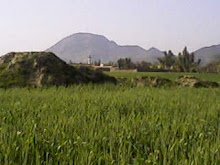New Seven Wonders Of The World.
Nearly, hundred million people voted to represent global heritage. The pyramid of Giza is conspicuously absent from the list as it surprisingly went out of favor of public. The listing is in randon order, as announced at the Declaration Ceremony on 07.07.07. All the Official New 7 Wonders are equal and are presented as a group without any ranking.
The Pyramid at Chichén Itzá (before 800 A.D.) Yucatan Peninsula, Mexico
MEXICO
 Chichén Itzá, once built played a central role in Mayan Civilization. The temple sufficiently reveals the degree sophistication these people achieved.
Chichén Itzá, once built played a central role in Mayan Civilization. The temple sufficiently reveals the degree sophistication these people achieved.The Roman Colosseum (70 - 82 A.D.) Rome , Italy
 The colossal Colosseum was built nearly 2,000 years back. Nearly, every design of the modern sports stadium bears striking resemblance to this majestic structure. Couple of thousand years later it might be a sight which gives you pleasure, but the appalling barbarism, brutality and bloodshed that went on in it in its heydays must have been very different from the graceful tranquility it exudes today.
The colossal Colosseum was built nearly 2,000 years back. Nearly, every design of the modern sports stadium bears striking resemblance to this majestic structure. Couple of thousand years later it might be a sight which gives you pleasure, but the appalling barbarism, brutality and bloodshed that went on in it in its heydays must have been very different from the graceful tranquility it exudes today.The Great Wall of China (220 B.C and 1368 - 1644 A.D.) China

The Great Wall of China was built to keep barbaric people at bay from invading
Machu Picchu (1460-1470), Peru

In the 15th century, the Incan Emperor Pachacútec built a city in the clouds on the mountain known as
Petra (9 B.C. - 40 A.D.), Jordan

On the edge of the Arabian Desert,
The Taj Mahal (1630 A.D.) Agra , India

This immense mausoleum was built on the orders of Shah Jahan, the fifth Muslim Mogul emperor, to honor the memory of his beloved late wife. Built out of pristine white marble and standing in formally laid-out walled gardens, the Taj Mahal is regarded as the most perfect jewel of Muslim art in
Christ Redeemer (1931) Rio de Janeiro, Brazil
 This statue of Jesus stands some 38 meters tall, atop the Corcovado mountain overlooking Rio de Janeiro. Designed by Brazilian Heitor da Silva Costa and created by French sculptor Paul Landowski, it is one of the world’s best-known monuments. The statue took five years to construct and was inaugurated on October 12, 1931. It has become a symbol of the city and of the warmth of the Brazilian people, who receive visitors with open arms.
This statue of Jesus stands some 38 meters tall, atop the Corcovado mountain overlooking Rio de Janeiro. Designed by Brazilian Heitor da Silva Costa and created by French sculptor Paul Landowski, it is one of the world’s best-known monuments. The statue took five years to construct and was inaugurated on October 12, 1931. It has become a symbol of the city and of the warmth of the Brazilian people, who receive visitors with open arms.

No comments:
Post a Comment